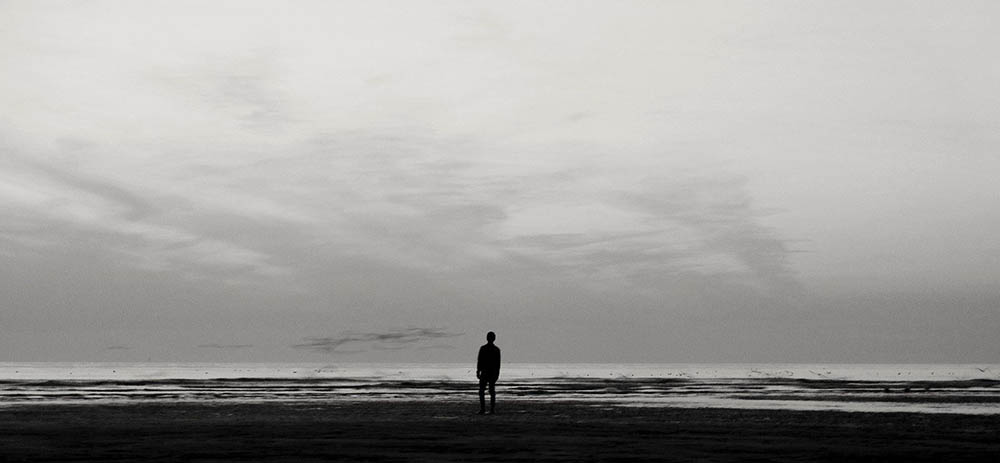9 Black & White Photography Ideas to Get You Inspired
Last Updated on

Colors aren’t always the solution for expressing our emotions in photography. The black and white style has long been a way to create stunning imagery without relying on what we see in real life. It might make you think of the era of the first film cameras, which were bulky contraptions that were rare to come by. However, we have the tools today at our disposal that let us do this with ease. Here are 9 black and white photography ideas to get you inspired—no color needed!

The 9 Black and White Photography Ideas Are:
1. Repetition

Humans are drawn to music, architecture, shapes, and everything in between. With black and white photos, taking photos in chaotic scenarios can be challenging. Searching for repeating patterns will draw the viewers’ attention and keep order within the image. One of the best ways to do this is by finding both man-made and natural objects that seem to follow a set number of continuous repetitions. For example, you can shoot three trees lined up together or the expanse of endless windows on a skyscraper.
2. Clouds and Stormy Weather

Weather is one area of our world that is unpredictable and ever-changing. The mixture of gray and white colors in stormy weather allows one to capture a moment that might never happen again. This is a great time for photographers to take advantage of remarkable cloud formations that already have a black and white hue.
3. Abandoned Places

The abandoned zone is a daring but fascinating idea hidden in the black and white photography community. Artists around the world find unkempt and seemingly deserted constructions left by humanity. Whether it’s a shipwreck, plane, mansion, or forest of rusted antique cars, a deteriorated subject is always stunning. Just make sure to get permission if your subject is on private property.
4. Natural Light and Sunbeams

When they break through a classic black and white vista, sunbeams are mother nature’s most heavenly scene. Much like our mention about climate, natural light is in constant motion outdoors. Still, you can find interesting variations of this right in your own home, and you don’t have to go out of your way to get creative. Angles play an essential part in this concept; try to move around the sunbeams for more chances at the perfect shot.
5. Silhouettes and Shadows

Silhouettes are a great way to separate your subject from the background, as it creates a lot of contrast. The good thing about this is that you can create a silhouette from just about anything out there, and you can underexpose the image according to how dark or bright your subject is. Especially without the use of color, shadows are a fundamental part of most pictures.
6. Pick Up a Film Camera

With an old film camera, you’re guaranteed to produce images that imitate the historic and iconic culture of the early 1900s. With this in hand, the grainy, rough textures of the film can add emotions that new digital bodies can’t get. Plus, you’ll be in the mood to create exposures that match your ideas of the relationship between film and black and white photography. Even the most minor things, like the sound of the flash or shutter, could push your inspiration further.
7. Story Portraits

In some ways, black and white portraits express the person’s story in the photo better than their fully-toned counterpart. Without the colors, the skin texture and emotional response of the person you’ve photographed will be powerful and intriguing. People from every walk of life have their chance to be presented in a way that shows how they feel and who they are. The most common ways people shoot portraits are outdoor scenes or with a backdrop.
8. Minimalism

Less is more in many cases, especially when you want to express minimalism. Black and white photos are the prime example of minimalism since there aren’t any colors to interfere and make things complex. Minimalism also makes contrast much easier, as these two tones are complete opposites of each other. There is a huge opportunity here to find contrasting subjects and use black and white to separate them to an even further extent.
9. Astrophotography

Astrophotography might seem out of place as one of the less popular types of black and white photography. We’re accustomed to seeing sensational Milky Way images that have a flurry of colors, but the fact is, we don’t see this in person. Black and white astrophotography display a more realistic view of what we see through a telescope. The images you can get from the lunar surface mixed with clouds or other scenery here on Earth could surprise you. A bit of time, patience, and planning will do wonders!

Conclusion
Black and white photography isn’t your typical photography genre. Most images these days are taken with our phones, which produce vibrant, true-to-life colors. However, that doesn’t mean B&W isn’t worth pursuing. In fact, the niche directs your focus more on what’s in the image, if anything. We hope these ideas help you create stunning black and white photos.
Featured Image Credit: Valentin Schönpos, Pixabay
About the Author Robert Sparks
Robert’s obsession with all things optical started early in life, when his optician father would bring home prototypes for Robert to play with. Nowadays, Robert is dedicated to helping others find the right optics for their needs. His hobbies include astronomy, astrophysics, and model building. Originally from Newark, NJ, he resides in Santa Fe, New Mexico, where the nighttime skies are filled with glittering stars.
Related Articles:
How to Clean a Refractor Telescope: Step-by-Step Guide
How to Clean a Telescope Eyepiece: Step-by-Step Guide
How to Clean a Rifle Scope: 8 Expert Tips
Monocular vs Telescope: Differences Explained (With Pictures)
What Is a Monocular Used For? 8 Common Functions
How to Clean a Telescope Mirror: 8 Expert Tips
Brightfield vs Phase Contrast Microscopy: The Differences Explained
SkyCamHD Drone Review: Pros, Cons, FAQ, & Verdict
